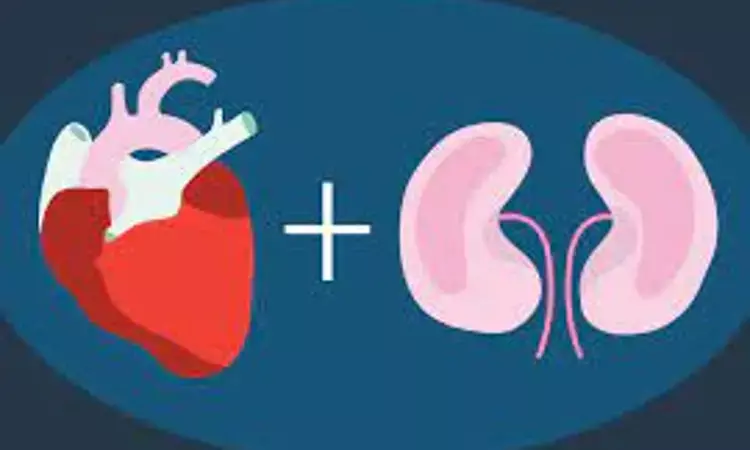- Home
- Medical news & Guidelines
- Anesthesiology
- Cardiology and CTVS
- Critical Care
- Dentistry
- Dermatology
- Diabetes and Endocrinology
- ENT
- Gastroenterology
- Medicine
- Nephrology
- Neurology
- Obstretics-Gynaecology
- Oncology
- Ophthalmology
- Orthopaedics
- Pediatrics-Neonatology
- Psychiatry
- Pulmonology
- Radiology
- Surgery
- Urology
- Laboratory Medicine
- Diet
- Nursing
- Paramedical
- Physiotherapy
- Health news
- Fact Check
- Bone Health Fact Check
- Brain Health Fact Check
- Cancer Related Fact Check
- Child Care Fact Check
- Dental and oral health fact check
- Diabetes and metabolic health fact check
- Diet and Nutrition Fact Check
- Eye and ENT Care Fact Check
- Fitness fact check
- Gut health fact check
- Heart health fact check
- Kidney health fact check
- Medical education fact check
- Men's health fact check
- Respiratory fact check
- Skin and hair care fact check
- Vaccine and Immunization fact check
- Women's health fact check
- AYUSH
- State News
- Andaman and Nicobar Islands
- Andhra Pradesh
- Arunachal Pradesh
- Assam
- Bihar
- Chandigarh
- Chattisgarh
- Dadra and Nagar Haveli
- Daman and Diu
- Delhi
- Goa
- Gujarat
- Haryana
- Himachal Pradesh
- Jammu & Kashmir
- Jharkhand
- Karnataka
- Kerala
- Ladakh
- Lakshadweep
- Madhya Pradesh
- Maharashtra
- Manipur
- Meghalaya
- Mizoram
- Nagaland
- Odisha
- Puducherry
- Punjab
- Rajasthan
- Sikkim
- Tamil Nadu
- Telangana
- Tripura
- Uttar Pradesh
- Uttrakhand
- West Bengal
- Medical Education
- Industry
Cystatin C a Better Marker of Cardiovascular Risk in CKD: study

Cystatin C Is a Better Marker of Cardiovascular Risk in CKD suggestsa new study published in the JAMA Network Open.
Kidney function is usually estimated from serum creatininelevel, whereas an alternative glomerular filtration marker (cystatin C level)associates more closely with future risk of cardiovascular disease (CVD) andmortality.
A study was conducted to evaluate whether testing concordancebetween estimated glomerular filtration rates based on cystatin C (eGFRcys) andcreatinine (eGFRcr) levels would improve risk stratification for futureoutcomes and whether estimations differ by age.
A prospective population-based cohort study (UK Biobank),with participants recruited between 2006-2010 with median follow-up of 11.5(IQR, 10.8-12.2) years; data were collected until August 31, 2020. Participantshad eGFRcr greater than or equal to 45 mL/min/1.73 m2, albuminuria (albumin<30 mg/g), and no preexisting CVD or kidney failure.
Ten-year probabilities of CVD, mortality, and kidney failurewere assessed according to CKD status. Multivariable-adjusted Cox proportionalhazards models tested associations between CVD and mortality. Area under thereceiving operating curve tested discrimination of eGFRcr and eGFRcys for CVDand mortality. The Net Reclassification Index assessed the usefulness of eGFRcrand eGFRcys for CVD risk stratification. Analyses were stratified by older (age65-73 years) and younger (age <65 years) age.
Results:
- There were 428 402 participants: median age was57 (IQR, 50-63) years and 237 173 (55.4%) were women. Among 76 629 olderparticipants, there were 9335 deaths and 5205 CVD events. Among 351 773 youngerparticipants, there were 14 776 deaths and 9328 CVD events.
- The 10-year probability of kidney failure wasless than 0.1%. Regardless of the eGFRcr, the 10-year probabilities of CVD andmortality were low when eGFRcys was greater than or equal to 60 mL/min/1.73 m2;conversely, with eGFRcys less than 60 mL/min/1.73 m2, 10-year risks were nearlydoubled in older adults and more than doubled in younger adults.
- Use of eGFRcys better discriminated CVD andmortality risk than eGFRcr.
- Across a 7.5% 10-year risk threshold for CVD,eGFRcys improved case Net Reclassification Index by 0.7% in older people and0.7% in younger people; eGFRcr did not add to CVD risk estimation.
The findings of this study suggest that eGFRcr 45 to 59mL/min/1.73 m2 includes a proportion of individuals at low risk and fails tocapture a substantial proportion of individuals at high-risk for CVD andmortality. The eGFRcys appears to be more sensitive and specific for CVD andmortality risks in mild CKD.
Reference:
Lees JS, Rutherford E, Stevens KI, et al. Assessment ofcystatin C level for risk stratification in adults with chronic kidney disease.JAMA Netw Open. Published online October 25, 2022.doi:10.1001/jamanetworkopen.2022.38300
Dr. Shravani Dali has completed her BDS from Pravara institute of medical sciences, loni. Following which she extensively worked in the healthcare sector for 2+ years. She has been actively involved in writing blogs in field of health and wellness. Currently she is pursuing her Masters of public health-health administration from Tata institute of social sciences. She can be contacted at editorial@medicaldialogues.in.
Dr Kamal Kant Kohli-MBBS, DTCD- a chest specialist with more than 30 years of practice and a flair for writing clinical articles, Dr Kamal Kant Kohli joined Medical Dialogues as a Chief Editor of Medical News. Besides writing articles, as an editor, he proofreads and verifies all the medical content published on Medical Dialogues including those coming from journals, studies,medical conferences,guidelines etc. Email: drkohli@medicaldialogues.in. Contact no. 011-43720751


